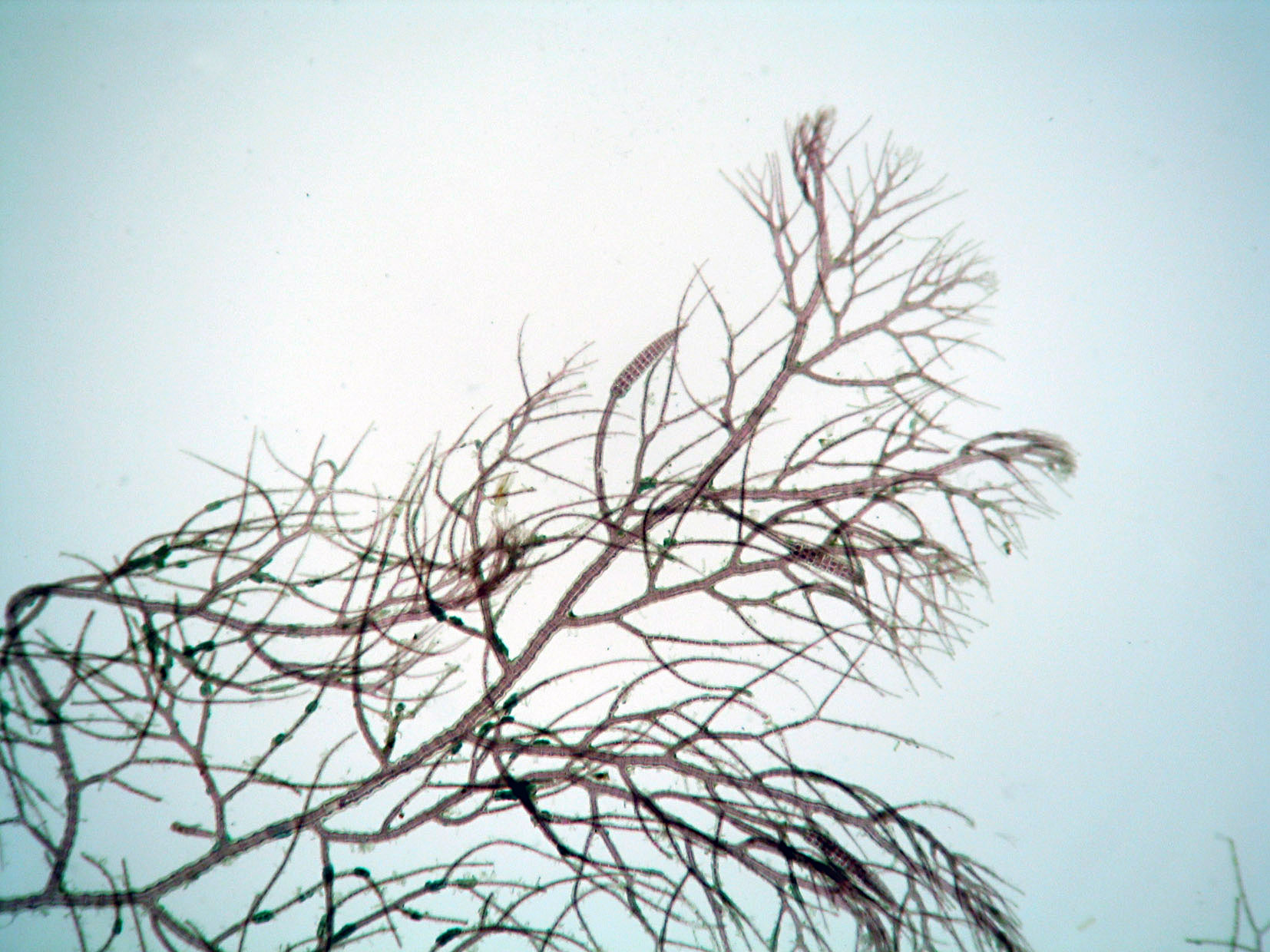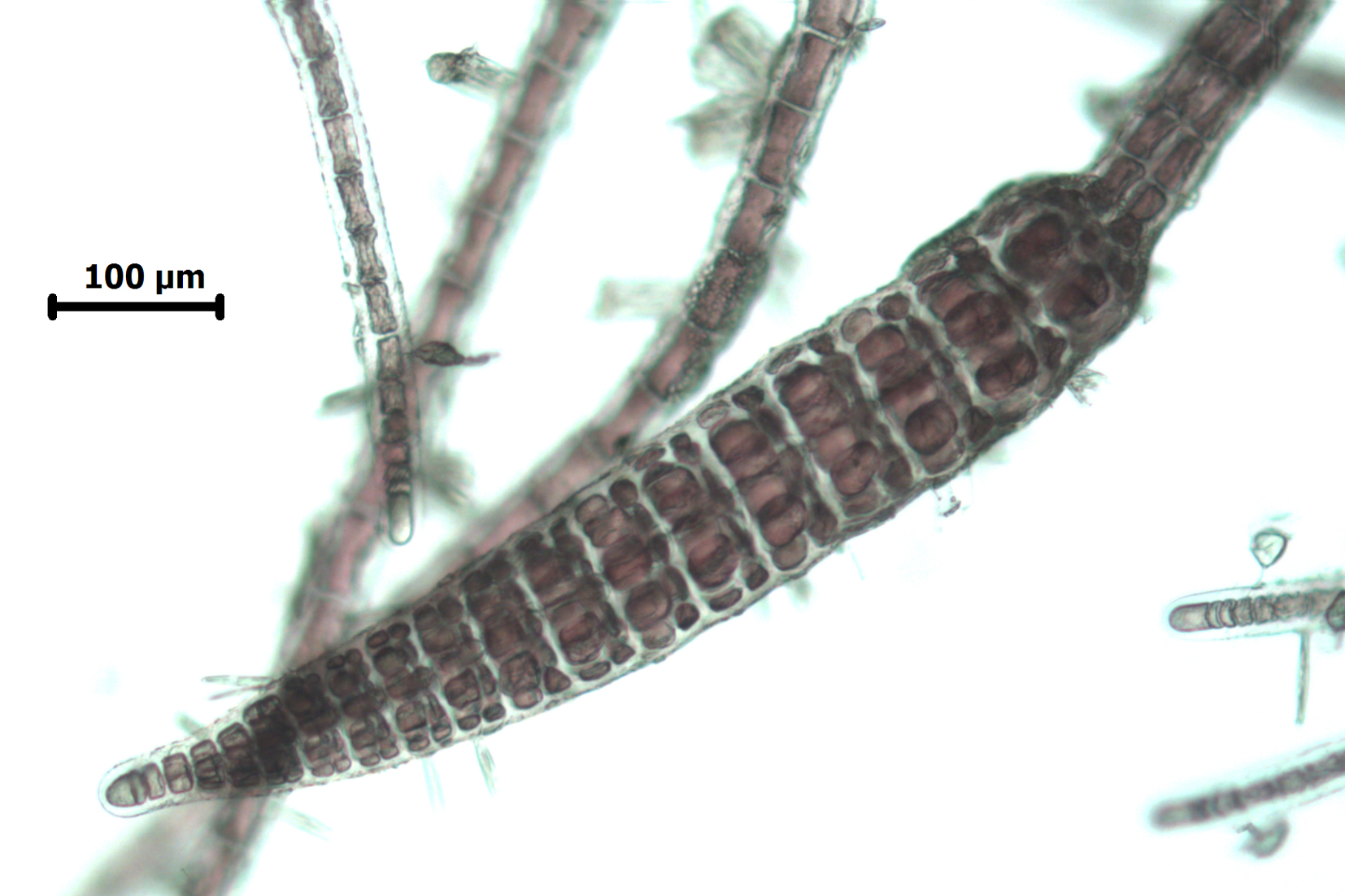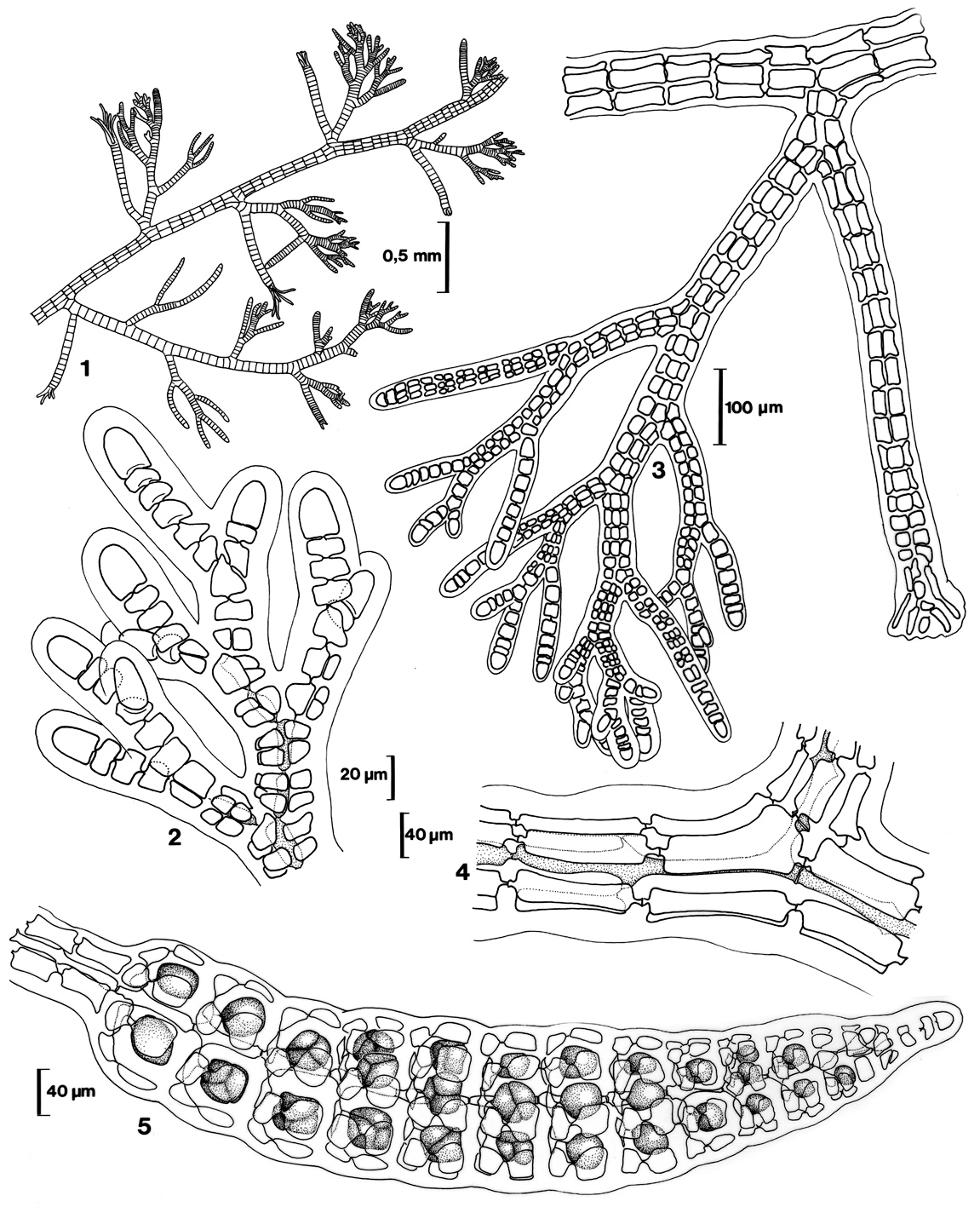Seaweeds of the South African South Coast


Order Ceramiales
Family Rhodomelaceae
Bostrychia moritziana (Sonder ex Kützing) J.Agardh 1863: 862
Plants reddish-brown, forming woolly tufts on the stems of salt-march plants, secondarily attached by rhizoids that develop from the apices of laterals, thalli rather fine and hair-like. Main axis polysiphonous, segments with 4-5 pericentral cells that divide transversely into two tiers; further cortication absent. Mature filaments ca 120 µm in diameter. Branching alternate, at intervals of 3-5 segments, laterals similarly re-branching, ultimate branchlets monosiphonous for many segments. Tetrasporangial stichidia borne on ends of polysiphonous branches, attenuated cone-shaped, up to 800 µm long and 150 µm wide. Tetrasporangial segments with four pericentrals, each becoming fertile and each cutting off a tetrasporangium and two 2-celled groups of cover cells. Sexual reproduction not seen.
Collections, ecology and regional distribution
Recorded in Langebaan Lagoon on the west coast (13) (Stegenga et al 1997). On the south coast recorded from Knysna Lagoon and by Lambert et al. (1987) from a number of estuaries from Nahoon (East London) to Kosi Bay in northern KwaZulu-Natal (30-58). Found in salt marshes attached to higher plants and any reasonably firm substrata.
World distribution: Found virtually worldwide in tropical and some warm temperate localities (Guiry & Guiry 2010).
Syntype localities: Antilles, West Indies; French Guiana (Silva et al. 1996); Venezuela, St Lucia and French Guiana and lectotype from Cumana, Venezuela (Womersley 2003).

Bostrychia moritziana, fresh material under dissecting microscope, Knysna Estuary.

Bostrychia moritziana, tetrasporangial stichidium.

Bostrychia moritziana. 1. Habit, tetrasporangial plant. 2. Thallus apex. 3. Detail, showing central cells and divided pericentral cells. 4. Tetrasporangial stichidium (central filament black). Reproduced from Stegenga et al. (1997).
References Bostrychia moritziana
Agardh, J.G. 1863. Species genera et ordines algarum, seu descriptiones succinctae specierum, generum et ordinum, quibus algarum regnum constituitur. Volumen secundum: algas florideas complectens. Part 2, fasc. 3. pp. 787-1138, 1158-1291. Lundae [Lund]: C.W.K. Gleerup.
Guiry, M.D. & Guiry, G.M. 2010. AlgaeBase. World-wide electronic publication, National University of Ireland, Galway. http://www.algaebase.org; searched October 2010.
Lambert, G., T.D. Steinke & Y. Naidoo. 1987. Algae associated with mangroves in southern African estuaries. I. Rhodophyceae. South African Journal of Botany 53(5): 349-361.
Silva, P.C., Basson, P.W. & Moe, R.L. 1996. Catalogue of the benthic marine algae of the Indian Ocean. University of California Publications in Botany 79: 1-1259.
Stegenga, H., Bolton, J.J. & R. J. Anderson. 1997. Seaweeds of the South African west coast. Contributions from the Bolus Herbarium 18: 655 pp.
Womersley, H.B.S. 2003. The marine benthic flora of southern Australia - Part IIID Ceramiales - Delesseriaceae, Sarcomeniaceae, Rhodomelaceae. pp. 533. Canberra & Adelaide: Australian Biological Resources Study & State Herbarium of South Australia.
Cite this record as:
Anderson RJ, Stegenga H, Bolton JJ. 2016. Seaweeds of the South African South Coast.
World Wide Web electronic publication, University of Cape Town, http://southafrseaweeds.uct.ac.za; Accessed on 07 January 2026.